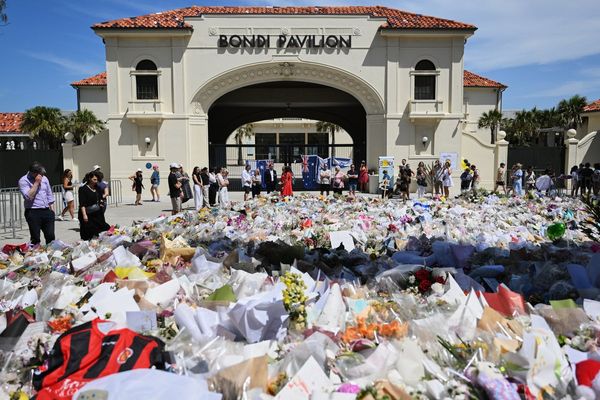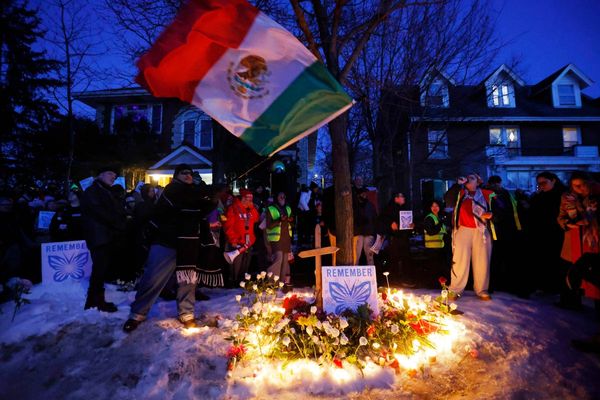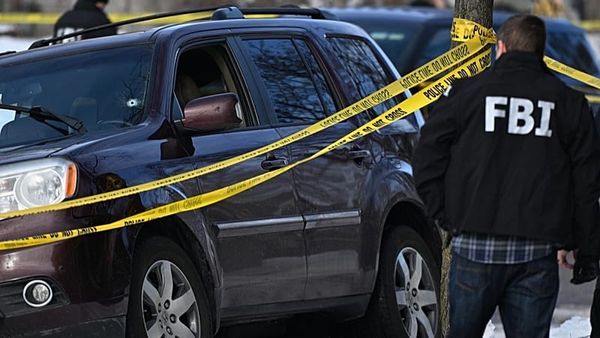
What a difference three years makes.
Treasurer Jim Chalmers was able to declare a forecasted surplus in Tuesday’s budget, but barely dared to gloat in his speech to Parliament.
“We are now forecasting a small surplus in 2022-23, which would be the first in 15 years,” he said. He also acknowledged it was likely a one-off that would be followed by a $13.9 billion deficit the following financial year.
Compare that with the fanfare of the Morrison government, which rolled out a “back in black” social media marketing campaign complete with branded mugs in 2019, in anticipation of a surplus that never came.
But after fires and floods, a pandemic and a global recession, Chalmers is acutely aware that he cannot afford to crow. The best that his modest $4 billion surplus can do to feed into the steady-as-she-goes narrative of the Albanese government is to underpin a “responsible” budget that will, as Chalmers has claimed, “see people through and set the country up”.
Chalmers articulated the acute challenges of his task on Tuesday night: “In all our decisions, we seek to strike a considered, methodical balance. Between spending restraint to keep the pressure off inflation, while doing what we can to help people struggling to make ends meet.”
That cohort is rapidly growing — as Chalmers acknowledged in his speech, “it is a time of economic uncertainty”. Against a backdrop of people struggling to pay soaring gas and electricity bills, astronomical rental increases and soaring mortgage repayments, the focus point of the budget is the $14.6 billion in cost-of-living relief for Australians who Chalmers acknowledged are “under the pump right now”.
The key pieces of the package include increasing the rate of certain welfare payments, including JobSeeker and single-parent payments; raising the maximum rates of rental assistance; investing $3.5 billion to triple the bulk-billing incentive for certain GP consultations; and spending $3 billion to slash energy bills.
But hidden alongside the relief for struggling households is, of course, what News Corp’s Samantha Maiden called the budget’s “dirty little secret” — the billions in cost-of-living relief do not come close to the billions in tax concessions for wealthy Australians.
On the ABC’s Q+A program on Monday, independent Senator Jacqui Lambie echoed the frustration of many Australians.
“You’ve still got those bloody stage three tax cuts,” she said. “With rich people like you and I, because we earn more than enough, we could pay more tax, not take more tax.” The cuts effectively mean everyone earning between $45,000 and $200,000 pays the same marginal 30% tax rate.
But despite this glaring anomaly, Chalmers repeatedly used the word “fair” in his budget speech.
As the government spin goes, Chalmers, Anthony Albanese and their colleagues are “laying the foundations for a stronger, fairer and more resilient economy into the future”.
Along with the very real need to keep inflation down, the Albanese government is clearly intent on killing for good the characterisation of the ALP as the tax-and-spend party.
But the word “fairer” is crucial here too, not least because voter sentiment is changing. That’s partly because more people are hurting.
As Claire Tacon, assistant director of financial counselling at the Consumer Action Law Centre, told The Age, a new group of fully employed people who’ve never experienced financial problems before are now phoning the National Debt Helpline.
“Previously, everyone had a story … their marriage may have broken down, or they stopped work to care for a parent or partner,” she said. “Now, there is often no backstory. It’s because interest rates have gone up, cost of living has gone up, and their incomes have stayed the same.”
One in eight people are now living below the poverty line, according to a recent Senate inquiry report into poverty in Australia.
As Reverend Crews recently told The Sydney Morning Herald, foodbanks are no longer just “feeding the homeless but feeding the hungry”.
And with a wider cross-section of voters feeling the pinch, rather than skipping to the part that shows what’s in it for them, more scrutiny is being applied to the finer detail. Focus group research firm RedBridge Group’s Simon Welsh wrote recently, “we find that real attention is now being paid to both sides of the government accounts: what are they cutting and what are they spending on? Participants are scrutinising both from within this frame of resource competition: what are they taking from me and who are they giving it to?”
That’s par for the course when it comes to the winners and losers style of media narrative of most federal budgets, but Welsh pointed out something unexpected: “what we don’t see among ‘middle Australia’, persuadable voters is any real sense of ‘kicking down’ — a response that historically you might expect in this context … middle Australia wants to see government extend a helping hand, not the boot, to those less fortunate than them”.
Chalmers delivers this budget into a starkly different political climate than his recent predecessors. Tonight, he characterised it as “an economic strategy to help with the cost-of-living pressures now — and to maximise and extend the opportunities of the future to more of our people in more parts of our country. In the defining, decisive decade ahead.”
Whether it’s done enough to address that will be up to voters.







